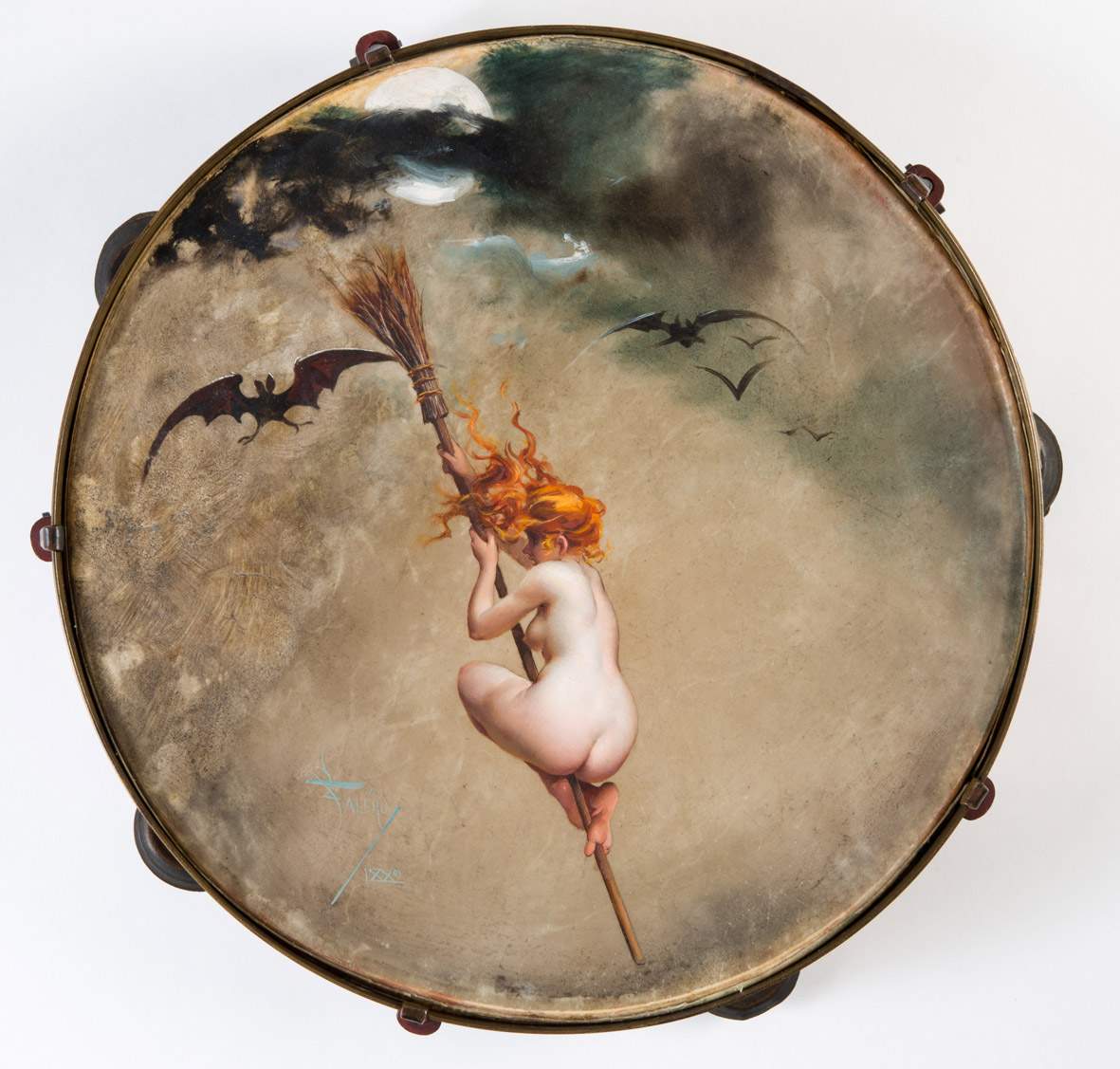Art and esotericism, a major exhibition in Rovigo on magic between symbolism and historical avant-gardes
Scheduled in Rovigo, at Palazzo Roverella, from September 29, 2018 to January 27, 2019, is the exhibition Art and Magic. Esoterisms in European Painting from Symbolism to the Historic Avant-Garde, which explores the theme of magic andesotericism in art at the turn of the 19th and 20th centuries, particularly between 1880 and the early postwar period. Thus, on display are works by Symbolist, Expressionist, Divisionist, and Futurist painters, all the way to MaleviÄ’s Suprematism and Mondrian’s Neo-Plasticism. A few names of the artists whose works make up the exhibition itinerary: Odilon Redon, Paul Ranson, Eugène Grasset, Jean Delville, Felicien Rops, Austin Osman Spare, Paul Sérusier, Alberto Martini, Carlos Schwabe, Vasily Kandinsky, Auguste Rodin, Edvard Munch, Frantisek Kupka, Giorgio Kienerk, Leonardo Bistolfi, Ferdinand Hodler, Albert Trachsel, Mikalojus Konstantinas ÄŒiurlionis, Hugo Höppener (Fidus), Peter Behrens, Bruno Taut, Ernesto Basile, Paul Klee, Johannes Itten, Luigi Russolo, Willelm Morgner, Kazimir MaleviÄ, Gaetano Previati, George Frederic Watts, Giacomo Balla, Piet Mondrian, František Kupka, Romolo Romani.
The exhibition, curated by Francesco Parisi, starts with Symbolism, which accorded great attention to esoteric doctrines, their figurations and myths: first widespread in France and Belgium, thanks mainly to the bizarre and eccentric critic Josephin Péladan and his Salon de la Rose+Croix (to which an exhibition was recently dedicated at the Peggy Guggenheim in Venice), esoteric culture soon reached Europe, fascinating many of the greatest artists of the time, from Arnold Böcklin to Gaetano Previati. Also having a great influence on art (and mainly on research on optics and colors) were hermetic theories, beginning with the theosophy of Helena Petrovna Blavatsky, which had repercussions on the theories of Johannes Itten, one of the leading exponents of the early Bauhaus, and on the works of Piet Mondrian, Paul Klee, Vasilij Kandinsky and others. In Italy, esoteric culture would influence the color research of painters such as Giacomo Balla and Arnaldo Ginna, as well as Julius Evola (who in addition to being a writer and poet was also a painter and esotericist himself), and in literature would fascinate writers such as Gabriele d’Annunzio, Dino Campana and Luigi Pirandello.
Literature itself was an important vehicle for the dissemination of esoteric theories: books such as Édouard Schuré’s The Great Initiates or Joris-Karl Huysmans’ Là-bas exerted great fascination on painters and sculptors but also on writers and journalists: communities inspired by Eastern religions were thus born, based on a utopian, magical and irrational system in which solar cults, nudism and vegetarianism were practiced. Many artists and literati took part in similar experiences, and if at first (until the second half of the 19th century) interest in esotericism remained somewhat dormant emerging sporadically, from the mid-19th century it began to spread more and more consistently until it almost became a fashion.
In order for the public at Palazzo Roverella to approach the exhibition (divided into eight sections, each introduced by a historical work, from the Renaissance to the Enlightenment) with the “spirit” of the time, the organizers have imagined, we read in the presentation, “a true initiatory path that will proceed from the invitation to silence (section I, Entrance, Enigma, Invitation to Silence), through temples and altars (section II, Esoteric Architecture: Temples and Altars) toward initiatory enlightenment thus ending with the representation of auras and rays (Section III, Psyche, Cosmos, Auras and Ancestral Forms).” Some of the themes: the devil in all his manifestations (from the demons of antiquity to the modern Faust), the witch, an icon of decadent Art Nouveau who leads artists into the abysses of voluptuousness, and also nocturnal animals (owls, wolves, crows, bats) and portraits of the artists and thinkers who most contributed to the spread of esotericism.
The exhibition is sponsored by the Fondazione Cassa di Risparmio di Padova e Rovigo with the Accademia dei Concordi and the Municipality of Rovigo. The catalog, published by Silvana Editoriale, includes critical texts by Jean-David Jumeau Lafond (Rose+Cross Salon), Hana Larvovà (Prague and Magical Bohemia), Robert Ansell (Artists and the Golden Down), Emanuele Bardazzi (Illustration and theesotericism between the 1800s and 1900s), Fabio Mangone (Esoteric architecture), Paolo Bolpagni (Music and esotericism), Mario Finazzi (Giacomo Balla and theosophy), Mara Folini (Monte Verità and Central European artists), Matteo Fochessati (Theosophists and anthroposophists in Liguria). All info at http://www.palazzoroverella.com.
Pictured: Luis Ricardo Faléro, La Sorcière, 1882, private collection.
 |
| Art and esotericism, a major exhibition in Rovigo on magic between symbolism and historical avant-gardes |
Warning: the translation into English of the original Italian article was created using automatic tools. We undertake to review all articles, but we do not guarantee the total absence of inaccuracies in the translation due to the program. You can find the original by clicking on the ITA button. If you find any mistake,please contact us.




























